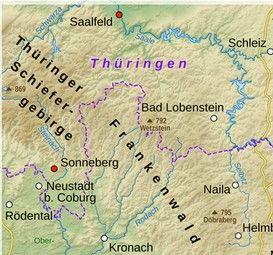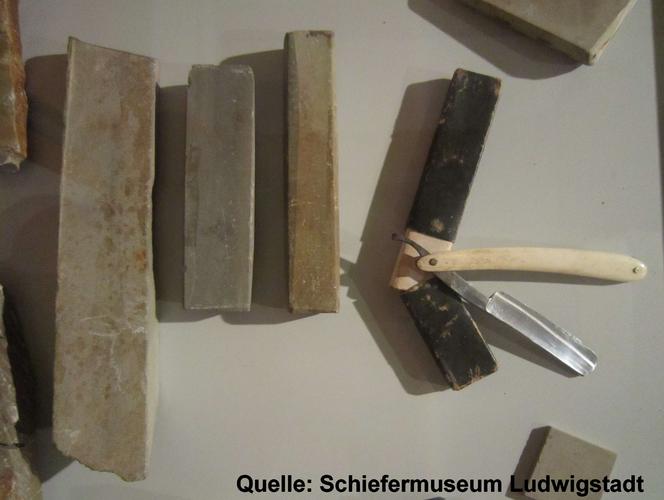Results 41 to 50 of 50
Thread: The Frankonian
-
04-14-2014, 07:29 AM #41Senior Member



- Join Date
- Apr 2008
- Location
- Essex, UK
- Posts
- 3,816
Thanked: 3164
Ah, dear old Francisco. I did hear tell that he found the revered Franconian hone in the Asturian Coalfields in the 1920s. The hone itself, of course, performed very poorly unless one intoned the following mantra while using it: "One Hone! No Slurry! One Chief! Franco! Franco! Franco!"
The hone was quite common in Spain at one time, but post 1975 virtually every trace of it disappeared, only for it to remain a glowing but dying ember in the memories of die-hard fascists during the Cold War.
Regards,
NeilLast edited by Neil Miller; 04-14-2014 at 07:32 AM.
-
04-14-2014, 10:34 AM #42Senior Member

- Join Date
- Nov 2013
- Location
- Loughborough UK
- Posts
- 395
Thanked: 129
-
The Following User Says Thank You to Anthony1954 For This Useful Post:
doorsch (04-14-2014)
-
04-14-2014, 12:25 PM #43

I have a large Franconian and I really like it. I've had it for about 3 years now. I read a review on another shaving forum by Harvits81 (Joe Edson, custom razor and knife maker)
http://badgerandblade.com/vb/showthr...ght=franconian
I know that Gabor Buddel, the German custom razor maker rated the Franconian very highly. He finished a Damascus custom that I commissioned from him on one. Super smooth finish.
I've never used an Escher but I've had a few Thuringians and I prefer the Franconian. The one I've got is a large stone which makes using it very easy. I've found it a little slower than the Thuringian but no where near as slow as a C12K.
Maybe the people mining them didn't know what they were cutting, maybe there is a huge variability in them but I'm very happy with mine.
-
The Following User Says Thank You to johnmrson For This Useful Post:
doorsch (04-14-2014)
-
04-14-2014, 12:43 PM #44

From what I have read, most people who tried it, disliked it, and few loved it.
It might be because the demand for Frankonians exceeded the number of quality stones that could be found and tested. If it's a dozen of people who want one, you might be able to satisfy both the demand, and, the buyer with the quality of the stone.
If there are hundreds of orders, the quality will drop, unless you have the absolutely perfectly homogenous stone with unbelievably consistent results. Like the old Thuringians. In any other case, you will get a paperweight, that has the name of a famous stone, with a disappointing performance.
-
04-14-2014, 12:54 PM #45

http://straightrazorpalace.com/hones...nian-hone.html
funny how often this one was discussed without any conclusion here....
...Neils hint to use the search might sometimes be helpful :-)Last edited by doorsch; 04-14-2014 at 01:01 PM.
-
04-14-2014, 01:24 PM #46Senior Member



- Join Date
- Apr 2008
- Location
- Essex, UK
- Posts
- 3,816
Thanked: 3164
Oh, I know the site is still there Anthony - from what I recall it has never been stopped or suspended.
That is not the same as saying Olivia is running it though. If she is, she seems to have been struck dumb - she was quite voluble in the old days.
The stone database is what I had no faith in, by the way, and I still have issues with it.
Regards,
NeilLast edited by Neil Miller; 04-14-2014 at 01:33 PM.
-
04-14-2014, 01:27 PM #47Senior Member



- Join Date
- Apr 2008
- Location
- Essex, UK
- Posts
- 3,816
Thanked: 3164
Seems to me that there are a lot of opinions and conclusions regarding the stone. Like Vasilis says, most of them here and a good number on other forums were negative. Besides, the stone is no longer visible on the site which brought it to mention - that must tell us volumes...
As other posts have revealed, some considerable time ago at that, there were stones from this region available way back when that were held in high regard, but which were virtually useless unless used as a very final finisher after having put a layer of tape on the spine especially for finishing with one of these antique hones.
That the name was borrowed by Olivia (Antje Meier) for the hones supplied by her brother (Manfred) from those antique hones is more or less established, but they share only the name, not the legend.
Regards,
NeilLast edited by Neil Miller; 04-14-2014 at 01:31 PM.
-
The Following User Says Thank You to Neil Miller For This Useful Post:
hatzicho (04-16-2014)
-
04-16-2014, 08:16 AM #48

The ancient Frankonian whetstone quarries had been in direct neighborhood to the Thuringian mines. Frankonian is an area in Bavarian, the slate formations extend from the Thuringian slate mountains directly into the Frankonian region.

The distance between the Thuringian whetstone quarries in the area around Sonneberg and the ancient Frankonian whetstone mines near the small Bavarian town Ludwigstadt is only about 20 miles.
The whetstone horizons of the Frankonian quarries are all found in Ordovician layers, comparable to some of the Thuringian Ordovician quarries I have already reported in some threads. So the material mined in Frankonian is not the same like the well known soft thuringian waterwhetstones which are found in Devonian age formations, it is generally harder.
It is not known when the mining of whetstones began in the Frankonian area, but it ended somehow around the year 1945.
In the following picture you can see some ancient Frankonian hones on exhibition at the slate museum Ludwigstadt.

-
The Following 8 Users Say Thank You to hatzicho For This Useful Post:
25609289 (04-17-2014), Double0757 (04-16-2014), earcutter (04-16-2014), Hirlau (04-16-2014), JimmyHAD (04-16-2014), johnmrson (04-17-2014), Margeja (04-16-2014), Neil Miller (04-16-2014)
-
04-16-2014, 08:20 AM #49

Thanks Peter for your reply to this....as already asked here about historical documents...
... in comparison to the older Thuringian stones is there any known literature of these stones available....? and what is known about their performance ? If these were good or well known stones my guess would be to find these also in older Documents....███▓▒░░.RAZORLOVESTONES.░░▒▓███
-
04-16-2014, 09:02 AM #50

Well the quarries are described in some geological essays about this area and the thuringian-frankonian slate mountains in the years between 1880 and 1930.
Also there is the information of the mining statistics that for the year 1913 i.e. the total of mined whetstones in this frankonian area was about 25 tons.
And there are some newer studies mainly from H.J. Bautsch, that report about the whetstones found in ancient European trading centres, such as the Viking town Haitabu, and that associates this whetstones with the Frankonian whetstone mines as well as the Ordovician Thuringian quarries.
But I have not yet come across a catalogue or something that explicit named Frankonian hones.
-


 86Likes
86Likes LinkBack URL
LinkBack URL About LinkBacks
About LinkBacks







 Reply With Quote
Reply With Quote
